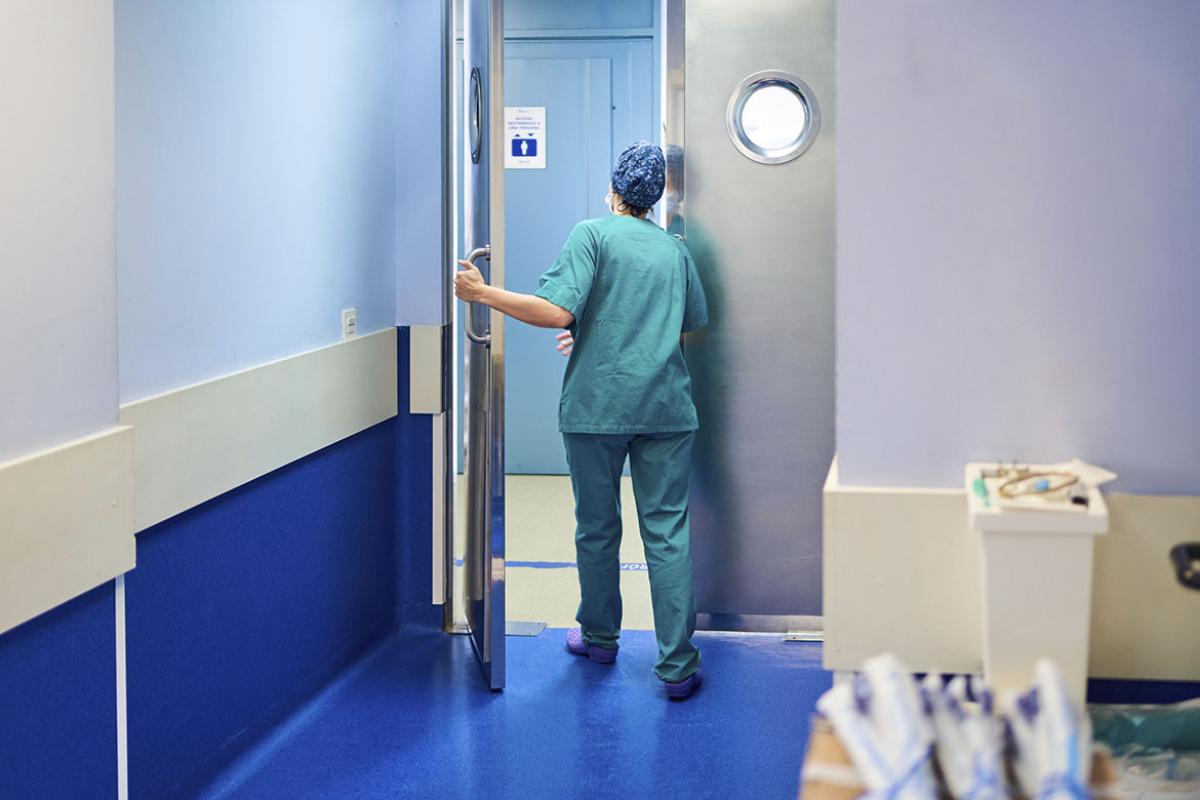History books written about the COVID-19 pandemic won’t be complete unless they mention the pivotal role played by the Marshfield Clinic Research Institute, which is part of Wisconsin’s Marshfield Clinic Health System.
The institute’s scientists test and process some 10,000 swabs a week, helping the Centers for Disease Control and Prevention (CDC) both track the progression of the disease and prove the effectiveness of the mRNA vaccines.
“The research institute is integral to the mission, vision and values of our health system because advances in science and medicine are made through research,” said Jennifer Meece, PhD, director of the institute’s Integrated Research and Development Laboratory, and a co-author of several CDC COVID-19 studies published in The New England Journal of Medicine and the CDC’s Morbidity and Mortality Weekly Report.
The lab has built a national reputation as a leader in respiratory infectious disease research through its participation in the flu vaccine effectiveness network and its collaboration with the CDC during the H1N1 flu pandemic of 2009—which some describe as the “dress rehearsal” for the COVID-19 pandemic, Meece said.
“Then, a year ago, when all of this started to unfold very quickly, the CDC realized they needed to put in place some infrastructure across the U.S. to start understanding this disease in more detail,” she said.
The CDC partnered with several institutions to set up a variety of population-study cohorts that included front-line health care staff, essential workers, households, pregnant women, children, seniors in communal living settings, and others.
“The goal is to be able to make generalizable findings through these the studies—so you're not just focused on one group,” Meece explained. “These studies represent different geographic areas, socioeconomic situations, races and ethnic groups.”
While wide variability was valued in the cohort populations, it was thought that, by having one lab test all the samples, it would produce the most consistent results.
“Different labs do things differently with different sensitivities and specificities,” Meece said. “By having a single laboratory doing all the testing, they control for some of that potential variability.”
The Marshfield institute received a $22.5 million grant last July to serve as the sole reference lab for the CDC studies monitoring symptomatic COVID-19 and asymptomatic SARS-CoV-2 viral shedding.
“There are other good labs out there, but we were fortunate to have the experience and a good reputation,” Meece explained. “We had walked the walk previously.”
Pandemic and study both evolve
Just as the pandemic has evolved, so has the role of the Marshfield Clinic, an AMA Health System Program member.
“The initial study design was ‘Let's understand the epidemiology, the risk factors, the co-morbidities, the outcomes,’ and then obviously, when the vaccine became available, we were able to do vaccine-effectiveness studies as well,” Meece explained.
“We'll be doing this work for another 12 months and we're moving into a time where there are outstanding questions,” she added. “We don't know how long immunity will last after a natural infection. We don't know how long immunity will last after a vaccination. I don't know where we'll go, but we'll continually use this infrastructure and sampling model to ask and answer questions around waning immunity, does the vaccine effectiveness change over time, and what is the effect of these variants on vaccines?”
Behind each test is a person
Meece noted that she and her staff receive regular reminders about the importance of their work.
“I never underestimate that, for the people to participate in these studies, they're swabbing their noses week after week after week. It takes a lot of fortitude to keep with it,” Meece said. “Behind every test is a person who—especially during the peak of the pandemic when the transmission rates were high—was really scared. Getting accurate test results in a timely manner meant a lot to these folks.”





